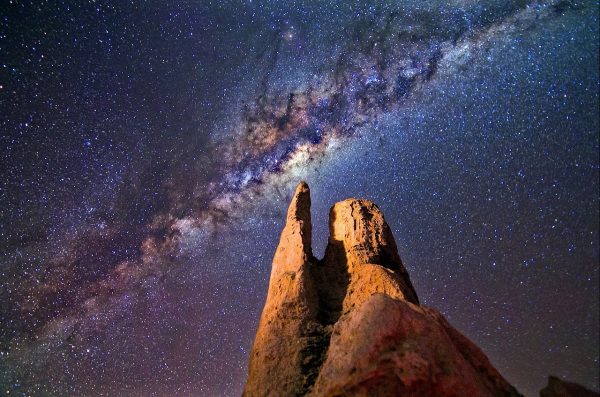There’s a “dark impactor” blasting holes in our galaxy. We can’t see it. It might not be made of normal matter. Our telescopes haven’t directly detected it. But it sure seems like it’s out there.
“It’s a dense bullet of something,” said Ana Bonaca, a researcher at the Harvard-Smithsonian Center for Astrophysics, who discovered evidence for the impactor.
Bonaca’s evidence for the dark impactor, which she presented April 15 at the conference of the American Physical Society in Denver, is a series of holes in our galaxy’s longest stellar stream, GD-1. Stellar streams are lines of stars moving together across galaxies, often originating in smaller blobs of stars that collided with the galaxy in question. The stars in GD-1, remnants of a “globular cluster” that plunged into the Milky Way a long time ago, are stretched out in a long line across our sky.
Under normal conditions, the stream should be more or less a single line, stretched out by our galaxy’s gravity, she said in her presentation. Astronomers would expect a single gap in the stream, at the point where the original globular cluster was before its stars drifted away in two directions. But Bonaca showed that GD-1 has a second gap. And that gap has a ragged edge — a region Bonaca called GD-1’s “spur” — as if something huge plunged through the stream not long ago, dragging stars in its wake with its enormous gravity. GD-1, it seems, was hit with that unseen bullet.



